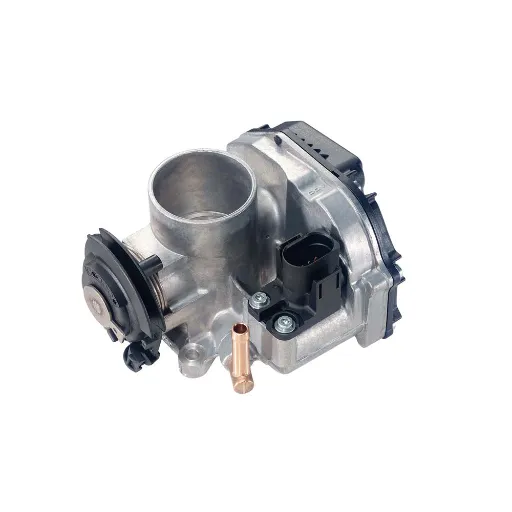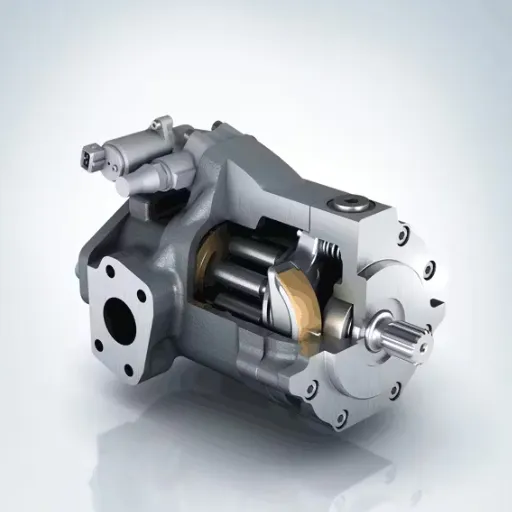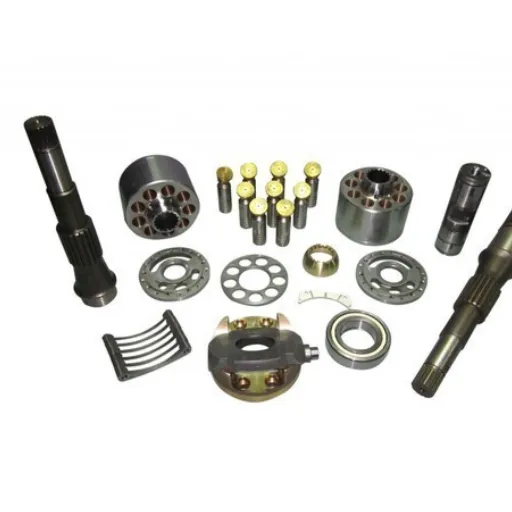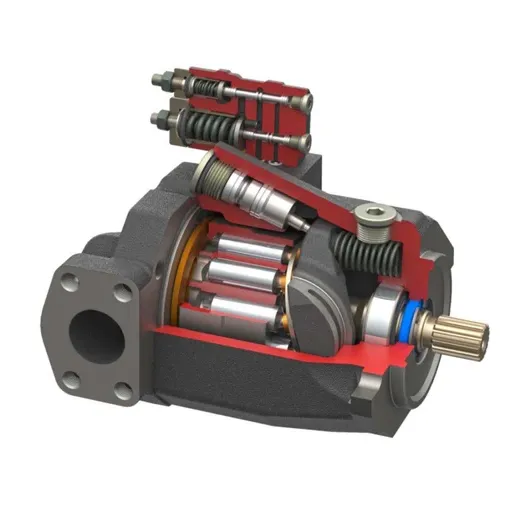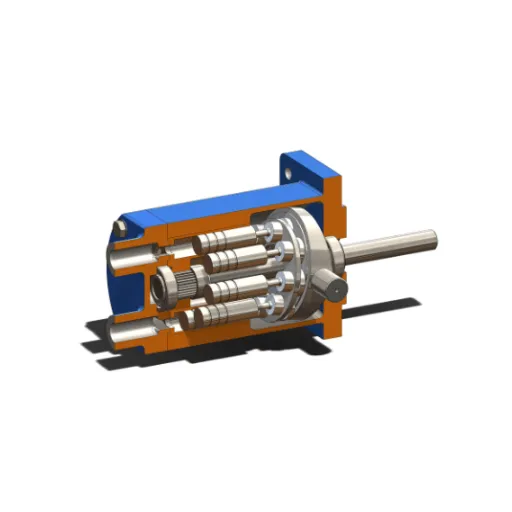Solenoid valves and motorized ball valves are critical components in fluid control systems, offering precision and reliability across a wide range of industrial and commercial applications. Whether you’re optimizing a process for efficiency or ensuring safety in automated systems, understanding the nuances of these two valve types is essential. This guide aims to demystify solenoid ball valves and motorized ball valves, breaking down their functionality, key differences, and practical uses. By the end, you’ll have the knowledge needed to make informed decisions about which valve type best suits your needs. From operational mechanisms to industry applications, we’ll cover everything you need to know to master the fundamentals of fluid control.
What is a solenoid valve, and how does it work?

Key components of a solenoid valve
To control the flow of a fluid or gas, the solenoid valve has some essential parts that act in unison. Some of the principal components are: solenoid coil, valve body, armature, plunger, and spring mechanism. The parts are all specially designed to perform their specific function well enough for the valve to operate efficiently.
- Solenoid Coil: This coil can be viewed as an electromagnetic device that acts to create a magnetic field when an electric current flows through it. The activated magnetic field then causes the plunger or armature to move, thus performing the actions required of the valve. The coil is usually insulated; the voltage rating and materials change according to application requirements.
- Valve Body: The valve’s innards are held within the body that also acts as the main framework for the solenoid valve. Usually, the material defines the name of the solenoid valve; brass, stainless steel, or polymer are the most common choices, depending on chemical compatibility and pressure requirements of the application for which it is to be used.
- Armature and Plunger: The armature and plunger are responsible for the actual movement in the solenoid valve. Guided by the magnetic field, the armature moves the plunger, which then opens or closes the valve seat to regulate flow of fluid or gas. These components are designed from ferromagnetic materials to provide the most efficient interaction with the solenoid coil.
- Spring Mechanism: The spring mechanism returns the plunger or valve to its default position (either open or closed) when the solenoid is de-energized. This ensures fail-safe operation in the absence of electrical power and maintains the valve position.
Together, the various system components interact to provide precise and reliable control over flow processes in the application of solenoid valves, thereby rendering them indispensable in various industrial and commercial fields such as HVAC, automation, and fluid control. Their performance is guaranteed only when compatible materials are chosen for design and are suitable for operation.
Functionality of a solenoid
Employing electromagnetic methods, a solenoid transforms electrical energy into mechanical motion. Electric current coursing through the solenoid coil creates a magnetic field that moves a plunger or armature within the solenoid housing. This movement enables the solenoid to manipulate mechanical systems or fluid flow as required by the application.
- Pressure range: For reliability and safe operation, the solenoid valve must be able to withstand working pressures over set limits, such as 0.5 to 10 bar, which ensure both efficiency and safety in operation.
- Flow coefficient (Cv): The flow coefficient indicates the amount of fluid the valve can permit to flow; this is very important when determining system performance. A value of 0.05 to 10 would be normal for many industrial applications.
- Response time: Control efficiency is affected by actuation time, 10-50 milliseconds for example, improving accuracy during fast operations.
These factors are designed for selection and optimization of a solenoid for specific tasks with performance and resilience against failure or safety in mind.
How does a ball valve differ from a solenoid valve?

Comparison between solenoid valves and ball valves
Such valves open in a jiffy, offering great convenience of compactness in size. Ball valves, however, see higher-pressure ratings, higher-flow rates, and dirtier media but do so at the expense of being slow and bulky.
| Aspect | Solenoid Valve | Ball Valve |
|---|---|---|
| Operation | Electric | Manual/Electric |
| Response Time | Instantaneous | Slower (2-3 sec) |
| Capacity | Lower | Higher |
| Pressure Limit | Lower | Higher |
| Fluid Type | Clean only | Handles particulates |
| Dimensions | Compact | Bulkier |
| Expense | Lower | Higher |
| Upkeep | More frequent | Less frequent |
| Energy Use | Continuous | Only during action |
| Fail-Safe | Normally open/close | Limited options |
When to choose a solenoid valve over a ball valve
In the contexts where rapid response, systematic control, and automation integration are fundamental, I prefer selecting a solenoid valve rather than a ball valve. Solenoid valves are ideal in cases of precision, speed, and energy utilization.
- Fast Switching: These valves change states in milliseconds, so they are better suited for processes that require rapid and repetitive actuation. For instance, the efficiency of solenoid valves in control of pneumatic devices or dispensing systems is largely enhanced due to their shortened response time.
- Equally Spaced Low Flow Rates: Solenoid valves are most favorable in systems with low volumetric flow rates and are capable of controlling flow rates of up to 20 gallons per minute for different sizes with greater efficiency.
- Low to Moderate Pressure: Solenoid valves function best in low to moderate pressures, typically between the ranges of 0 to 150 psi. Being in these ranges makes them highly reliable in fluid control applications under low pressure confinement.
- Compatibility of the Automated Systems: due to actuation by electric signals, these valves can be easily incorporated into automated systems. Therefore, solenoid valves can be most useful in dynamically designed systems with minimum human control.
- Energy Efficiency: Power is saved in systems with extended periods or repetitive valve actions as solenoid valves consume very little electric energy while in use.
All things considered, I would recommend solenoid valves when high dynamic performance, accurate low-pressure flow control, and automation integration are required.
What are the benefits of using electric ball valves?

Features of motorized ball valves
The variety of Motorized ball valves available offers something for practically every industrial and residential use. To begin, they provide the most accurate and effective flow control since the ball is turned by an electric motor actuator that opens or closes the valve. It is no longer neccessary to do anything manually since it can be performed automatically and integrated within the system controls without any effort.
- Voltage Options: These are available in a number of different options like 24V DC, 110V AC or 220V AC which provides computerization with different systems power supplies.
- Torque Rating: They provide sufficient torque to be able to operate under pressure conditions of 2 Nm to 20 Nm, depending on the size of the valve, without causing any mechanical strain.
- Material Construction: These are made of stainless steel or brass which are highly resistance to corrosion and durable when working in extreme conditions, such as with liquids, gasses or even aggressive chemicals.
- IP Rating: Protection from outside elements is provided with high ingress protection ratings of IP65 or higher which is reputable to these valves for additional dependability while in outdoor or even in wet conditions.
- Actuation Speed: The time of moderation of 3-10 seconds to change to provide a slowing response speed, which helps in averting the surge of pressure in the pipelines and aid in making it stable.
- Operating Pressure: They can withstand pressure depending on the model and their use of above 16 bar or higher.
I would apply a motorized ball valve in any application requiring exact and automated flow control of fluid or gas for prolonged durations. Their energy efficiency and integration within modern control systems make them an ideal solution in HVAC systems, water treatment plants, and industrial process control systems.
Efficiency of electric ball valves
The best electric ball valve is one regarded with utmost prestige because of efficiency. These valves operate with the electric actuator in precise automated control over the fluid flow. The precise efficiency of electric ball valves includes low torque requirements, speed of actuator response, and minimal drop in pressure across the valve since they are full bore.
Modern electric actuators require less energy to operate but still provide good performance levels. For example, most current electric ball valves have embedded smart control systems that allow for position feedback and diagnostics to maximize operational efficiency and system-level reliability. Moreover, the design of these valves practically eliminates leakage, which erected itself to guaranteed highest energy utilization and minimal wastage in industrial and HVAC applications.
Life cycle efficiency of electric ball valves is aggressive than that of manual or pneumatic operated valves, particularly in automated environments where they provide continuous non-stop precision control. Being able to work under extreme pressure and temperature conditions makes these valves all the more versatile and attractive to various industries, thus carving out a position for them in energy management, water treatment, and chemical processing systems.
Installation and maintenance of electric ball valves
Electric ball valve installation requires planning and technical specification observation for workmanship and longevity. Primarily, the valve should be compatible with the system housing pressure ratings, compatibility of materials used, and operational temperature ranges. The valves should be aligned to the piping system during installation to avoid any stress or strain that could affect the integrity of the valve with time. Proper piping supports should be used, and overtightening of any fitting should be avoided; doing so will distort the valve seat, causing internal leakage. Other considerations include ensuring that wiring connections for the electric actuator are properly protected against environmental effects such as moisture and dust.
Electric ball valves need regular maintenance to operate reliably and efficiently. Inspection should be done periodically to assess the condition of the valve’s housing, seals, and, where applicable, the actuator. The seals and seats must be replaced as soon as any deterioration is noticed to ensure a tight seal and avoid operational issues, especially with high-pressure or corrosive fluids. The actuator should be calibrated regularly and checked for functional accuracy since its position control of the valve is the most important functional parameter. Also, make sure that electrical connections are examined from time to time to avoid faults due to loose wire connections, corrosion, or short circuits.
Cleaning the valve and components is a fundamental task of preventive maintenance, especially in systems carrying fluids that may leave deposits or cause blockage with time. Depending on the working environment, it might be necessary to lubricate the moving parts of the valve for smooth operation. It is indispensable to keep records of said maintenance schedules and repairs, for it would be advantageous for the long-term system management to guarantee that the electric ball valves continue to produce the desired expectations. Utilization of these best practices would significantly increase the service life of the valve and decrease downtime, thus establishing an economic factor for vital industrial applications.
Where can you find the exact parts for a solenoid valve?
Understanding valve specifications
Properly specifying a valve contributes to its optimal performance, durability, and industrial and residential system compatibility. Typically, such specifications account for pressure ratings, temperature tolerances, material used, size, and actuation method. Pressure rating, usually given in pounds per square inch (PSI) or bars, is the maximum pressure level that the valve can safely take. Temperature tolerance limits the range of temperatures within which the valve can operate under normal conditions. Materials are usually chosen based on corrosion properties, strength, compatibility with the media, and these could be stainless steel, brass, or PVC.
A valve type specification will also have an impact upon performance specification. Class types range from ball, gate, butterfly, and globe valves, each made for its own set of flow control requirements. Ball valves are used in applications where a positive shut-off is required since they have low turning torque and short closing times, whereas globe valves are used where flow regulation is necessary. Manipulation has to be considered for a given valve type, depending upon the actuation method-your consideration may be manual, pneumatic, hydraulic, or electric operation-interfacing with whether the application requires automation or manual control.
The accurate valve specification selection also extends toward the knowledge of various industry standards and certifications. Such standards allow for the basic design and quality of valves to be independently monitored from the manufacturing process, whereas certain attributes related to safety and efficiency are monitored within the scope of the given application. Considering these technical criteria will surely allow companies and engineers to confidently choose a suitable valve for their systems and largely minimize the risk of failure or potential idle running of the systems.
Materials like stainless steel and brass
Stainless steel and brass are two widely used types of materials in valve manufacturing, each having its mechanical, chemical, and thermal behavior. Stainless steel is basically an alloy of iron with chromium and nickel, offering extensive resistance to corrosion, strength, and almost unlimited durability-if you consider aggressive working fluids, high-temperature exposure, and pressure-demanding applications. It is used in several industries, including chemical processing, food and beverage, and oil and gas, where reliability under harsh conditions is imperative.
Brass, an alloy of copper and zinc, is highly favored for excellent machinability, malleability, and resistance to dezincification. It fits water, air, and low-pressure gas systems perfectly. Brass valves are relatively cheap and perform well from a corrosion perspective in benign environments; thus, in plumbing, HVAC, and other residential or commercial settings, it is mainly used.
Material-specific data including tensile strength (e.g., 485 MPa for stainless steel grades such as 316) and working temperature (e.g., -20°F to 400°F for brass valves) assist the engineer in selecting the suitable material per the application. Such thorough evaluation of materials ensures durability of the valve, with respect to safety and operative standards; all working toward fulfilling industry protocol.
How to maintain and troubleshoot a solenoid or ball valve?

Routine maintenance tips for ball valves
With better maintenance, ball valves can be optimized for SNF 404 performance, longevity, and unbroken reliability in industries. Following are guidelines, that will help in the preservation of the functionality of ball valves:
- Leak Detection: For internal or external leakage, see to it regularly that he ball valve does not internalize any leakage. It may be due to wearing of seals, due to some wrong installation, damage, etc. Inspection includes checking the connection points, seats, and stem for seepage.
- Lubrication: The valve seats and stem must be lubricated in periodic interludes to obtain smoothness in operation and to prevent wear. The lubricant used must be compatible with the process fluid and the valve materials in order to prevent chemical degradation or contamination.
- Cleaning Procedures: Clean dirt, debris, or residue from the internal and external surfaces of the valve since these contaminants may impair its functioning. During cleaning, care must be taken not to harm the valve’s seating surface or coatings.
- Tightness of Fasteners: Ensure that all bolts and nuts, as well as all other fasteners, are tightly fastened. Loose components can cause misalignments or affect sealing performance.
- Perform Actuator Performance Test: For an actuated ball valve, check the functionality of the actuator and verify that it provides torque output commensurate with the valve’s operating requirements. Improper positioning of the valve may result from misalignment or insufficient torque.
- Replace Worn Components: Keep an eye on worn-out seals, O-rings, seats, or other parts and replace them if they show evidence of wear or deformation or possibly some kind of chemical attack. Use the recommended parts, as stated by the valve manufacturer, to ensure proper functioning.
- Pressure Testing: Pressure testing must be done on a periodic basis to conform to the test requirements of the pressure class of the valve. The testing must be carried out in a controlled environment with calibrated equipment to ascertain any potential weakness or failure.
- Environmental Considerations: For use of valves subjected to very high or low temperatures, in corrosive environment, or high vibration conditions, further precautions must be taken such as provision of protective coatings and ensuring that the grades of material are suitable to particular operational conditions.
Some operations should be carried out regularly so as to keep the ball valves in efficient working condition. This should lessen their chances of downtime during operations or expensive repairs. Hence, a maintenance regimen should be considered in accordance with the operating environment, with additional guidance from the valve manufacturer’s maintenance manual for any other special requisites.
When to replace valves and actuators
Replacement of valves and actuators is a major internal industrial system consideration for continuing the reliability and efficiency of the system. Valves and actuators must be changed when their performance falls short of operational levels. Signaling such need is leakage present nearly all the time, mishaps operating behaviors, or having energy being used excessively for it to be useless. Moreover, the wear and corrosion occasioned by the setting of its operation, such as high-temperature conditions, abrasive substances, or corrosive chemicals, do impair these components’ integrity.
Inspection data have to be considered in determining when replacements should be carried out. Actuators that give too much or too little time delay and inconsistent movement may indicate mechanical or electrical failures that should be rectified immediately. Severe pitting, cracking, or deforming of the valve surface could also signal the need of replacement in order to avoid operational hazards.
Manufacturers often give an estimate about how long their product should last. These are generic in nature and apply to all instances where the product may be used within standard conditions. High-pressure systems or extreme thermal cycling are just some examples of situations where earlier replacements might be necessary. Advanced diagnostic systems, such as condition monitoring systems and predictive maintenance tools, can be used to complement these recommendations, giving an operator real-time insight into the health of mechanical and electrical systems so that he or she can make an informed decision.
Practically, the replacement needs to be aligned with the maintenance strategy whilst minimizing downtime, keeping costs in check, and maintaining operational reliability. In doing so, periodic referencing toward current industry standards while heeding the technical guidance of the valve and actuator manufacturer will further reduce risk.
Frequently Asked Questions (FAQs)
Q: What is the difference between a solenoid valve and an actuated ball valve?
A: A solenoid valve is typically used for on/off control of fluid flow and is often normally closed or normally open. An actuated ball valve, such as a solid motorized ball valve, uses an electric, pneumatic, or hydraulic actuator to open or close the valve, offering higher flow rates and precise control. Understanding the valve vs actuated ball valve distinction can help you find the exact parts you need.
Q: How do electric solenoid valves work?
A: Electric solenoid valves operate by using an electromagnetic solenoid coil to control the movement of a plunger, which opens or closes the valve port. This mechanism allows for quick and automated control of fluid flow, making them ideal for applications requiring frequent on/off operations.
Q: What are the benefits of using ball valves?
A: Ball valves are typically used for their durability, high flow capacity, and ease of operation. They provide a tight seal and are available in stainless steel, carbon steel, and other materials, making them suitable for a wide range of applications, including irrigation and high-pressure systems.
Q: Are there different types of ball valves available?
A: Yes, ball valves are available in various types, including v-port ball valves, which are designed for better flow control, and direct-mount ball valves, which allow for easy attachment of actuators. Ball valves can also be double-acting or configured for specific applications, such as those requiring a NAMUR interface.
Q: What materials are solenoid and ball valves made from?
A: Solenoid and ball valves are typically made from materials such as stainless steel, carbon steel, brass, and plastic, depending on the application requirements. Valves are available in stainless steel for high corrosion resistance, while carbon steel is used for high strength and durability.
Q: How can I determine the right valve type for my application?
A: Selecting the right valve type involves considering factors such as the fluid type, pressure, temperature, flow rate, and the specific function required. Consulting with a specialist or reviewing product specifications can help you find the exact parts you need for your application.
Q: What power sources do motorized ball valves require?
A: Motorized ball valves are typically powered by electric sources such as 12VDC or 24VDC, allowing for automated control. Some motorized valves may also be actuated using pneumatic actuators, which rely on compressed air for operation.
Q: Can solenoid and ball valves be used in high-pressure applications?
A: Yes, both solenoid and ball valves can be used in high-pressure applications. Ball valves, in particular, are suitable for high-pressure systems due to their robust design and ability to provide a tight seal. It is essential to choose a valve that meets the pressure requirements of your specific application.
Q: What are the typical applications for solenoid and ball valves?
A: Solenoid and ball valves are versatile and can be used in various applications, including irrigation systems, industrial automation, fluid control in manufacturing processes, and more. Their ability to provide precise control and reliability makes them suitable for numerous sectors.





